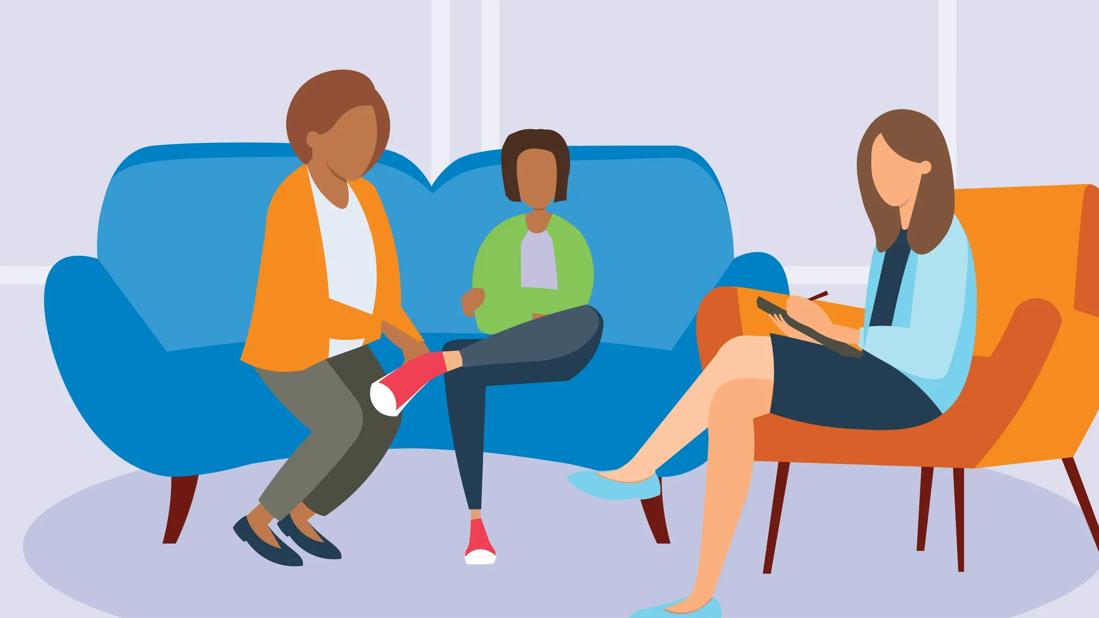Autism and OCD often co-occur, but distinguishing between them is crucial for successful treatment

Autism and obsessive-compulsive disorder (OCD) have enough in common that it can sometimes be hard to tell them apart.
Advertisement
Cleveland Clinic is a non-profit academic medical center. Advertising on our site helps support our mission. We do not endorse non-Cleveland Clinic products or services. Policy
Developmental pediatrician Carrie Cuffman, MD, explains the differences, why they matter and what to do if you think that you or your child is living with both.
Autism and OCD are comorbidities, which means it’s common for people to have both. A 2022 review found that 11.6% of autistic children and teens are also diagnosed with OCD.
That percentage is likely higher for adults because only about 50% of people diagnosed with OCD begin showing symptoms in their childhood or teenage years. The average age of onset is 19.
It’s worth noting that OCD is just one of many mental health and neurodevelopmental conditions that autistic people are more likely to have. And those conditions can also cause behaviors you might assume to be related to autism. That’s why it’s so important to work with a trained professional to figure out what individual behaviors actually mean. (More on that in a bit.)
“Autism and OCD are often confused for each other because the traits can overlap,” Dr. Cuffman notes. People with both conditions may experience:
What makes autism and OCD different is what’s causing these traits — and how the traits impact you.
Advertisement
There are a few key differences between autism and OCD, but the most important one is how your repetitive thoughts and behaviors make you feel.
“OCD traits are unwanted, disturbing and disruptive,” Dr. Cuffman explains. “The obsessions are intrusive and upsetting. In some cases, they’re even violent or sexual. You perform the compulsive behavior to address those obsessions.”
Let’s say, for example, you’re obsessed with germs. This leads you to wash your hands over and over again. But you’re not doing it because it feels good. You’re doing it because you’re afraid of what could happen if you don’t.
“Autistic repetitive behaviors can look like OCD from the outside, but those actions are often soothing, not disturbing,” Dr. Cuffman continues. Examples include stimming or following strict routines.
It’s also common in autism to have interests that, at first, might seem like obsessions. But for a thought or topic to be obsessive, it needs to be unwanted or intrusive. And in most cases, if you’re autistic, you hyperfixate (and hyperfocus) on things you enjoy.
So, what does it look like when autism and OCD coexist? Usually, there’s a mix of positive and negative repetitive thoughts and behaviors. Some make you feel calm or happy, and others make you uncomfortable or make it harder to function.
Of course, some people, including young children, may have a hard time expressing this difference. That’s one of the many reasons it’s so important to seek out the support of a trained healthcare professional.
If you or your child is autistic and you’re noticing signs of OCD, your first step should be talking to your specialist. For children, that’s usually a developmental pediatrician. For autistic adults, it could be a psychiatrist, a psychologist or even a neurologist.
Adults who are concerned about OCD but don’t have a formal autism diagnosis should speak to their primary care provider about those concerns.
“OCD is closely related to anxiety, so we can often treat it with anxiety medication — typically selective serotonin reuptake inhibitors (SSRIs),” Dr. Cuffman says. “Otherwise, the treatment is a specific type of behavioral therapy called exposure and response prevention.”
If your child is autistic but doesn’t have OCD, applied behavioral analysis (ABA) is the most recommended therapy, particularly for younger kids. Just keep in mind that most repetitive behaviors don’t require treatment.
“We don’t usually want to get rid of repetitive behaviors because those actions are coping mechanisms,” Dr. Cuffman further explains. “The only reason we’d try to change them is if they’re harmful or incredibly inappropriate — something like head-banging or another form of self-injury. In those instances, we may use ABA therapy to try to reduce or replace those destructive traits.”
Advertisement
One more thing: Understanding the relationship between neurodevelopmental and mental health conditions requires extensive training. And there’s a lot of misinformation out there about both topics. So, don’t rely on online quizzes or settle for a self-diagnosis.
With both autism and OCD, early detection and early intervention can make a big difference.
The right resources and support can improve your (or your child’s) quality of life in a big way. So, don’t hesitate to share any worries you may have with your provider. Your questions are worth answering.
Advertisement
Learn more about our editorial process.
Advertisement

Autism and ADHD often go hand in hand, giving rise to the term AuDHD

Quiz results are unreliable and don’t grant you access to autism resources or support

Current research suggests 1 of every 31 children in the U.S. has ASD — and that’s probably an undercount

Find a psychiatrist or psychologist in your area who works with autistic adults — or reach out to a pediatric specialist if you can’t find one

Securing your home, preparing your neighbors and teaching your loved one to swim are key to ensuring your child’s safety

Between 50% and 70% of autistic people also have an attention-deficit/hyperactivity disorder diagnosis

Describing people as ‘high- or low-functioning’ is both medically inaccurate and dehumanizing

Masking is a way of hiding our full selves — and it can have big consequences, particularly when used habitually by people with autism

Start having sex about 72 hours before ovulation, then at least every other day during your fertile window

Attachment theory suggests that your earliest relationships shape connections throughout your life

It isn’t a recognized mental health disorder, but research shows that problematic social media use can negatively affect your mental health, self-esteem and sleep